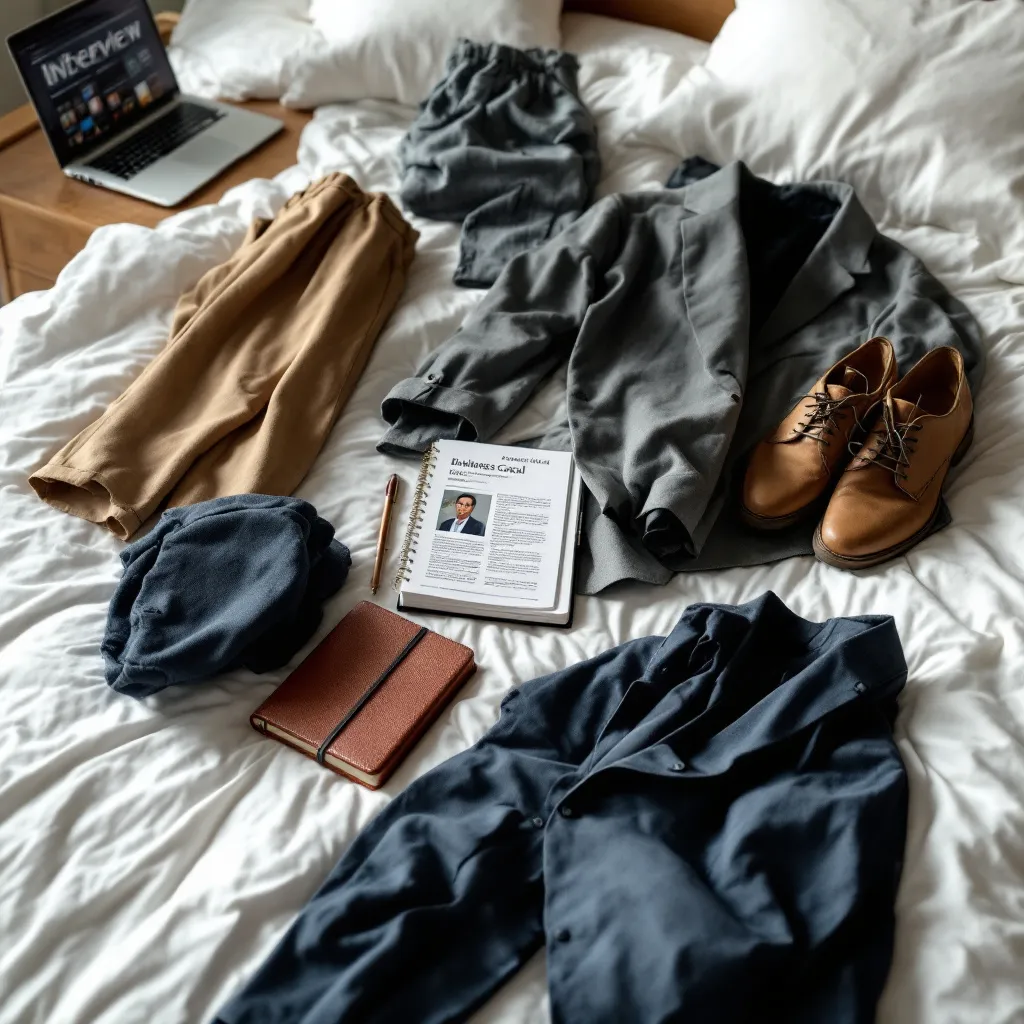First impressions matter, especially during job interviews. Your attire communicates volumes about your professionalism, attention to detail, and cultural fit before you even answer the first question. One of the most common dilemmas job seekers face is whether business casual is appropriate for their upcoming interview.
Understanding Business Casual in the Interview Context
Business casual occupies that middle ground between formal business attire and weekend wear. It typically includes:
- Tops: Collared shirts, blouses, or polos
- Bottoms: Dark jeans (without rips), chinos, or knee-length skirts
- Footwear: Loafers, flats, or clean, minimalist sneakers in some creative settings
- Layers: Cardigans, blazers, or sports coats
The definition has evolved significantly, especially post-pandemic, with many workplaces relaxing their dress codes. However, this evolution has created more ambiguity, not less. What qualifies as business casual can vary dramatically between industries and even between companies within the same sector.
As The Wardrobe Consultant explains, tech startups might welcome hoodies paired with structured blazers, while marketing agencies might expect blazers without ties. This variation makes research before your interview critical.
When Business Casual is Appropriate for Interviews
Industry-Specific Dress Code Expectations
Business casual is generally acceptable in these environments:
- Tech and Startups: Silicon Valley’s influence has made business casual (and sometimes even casual) the norm. A button-down shirt with chinos might be perfectly appropriate.
- Creative Fields: Design, marketing, and media companies often embrace more relaxed codes that allow for personal expression through clothing.
- Education and NGOs: These sectors typically maintain professional standards without requiring formal business attire.
However, business casual would be risky in:
- Finance, Law, and Consulting: These traditional industries still largely expect business professional attire for interviews, regardless of their day-to-day dress code.
- Executive Positions: Senior roles typically call for more formal attire, even in industries with casual cultures.
- Client-Facing Roles: Positions representing the company to clients often require more formal interview attire.
According to Indeed’s guide to business attire, understanding these industry expectations is crucial for making the right impression.
How to Determine the Right Dress Code for Your Interview
Unsure about what to wear? Here’s how to decode the expected dress code:
- Research the company culture: Check their website, social media, and employee LinkedIn profiles for visual cues about typical attire.
- Ask directly: Don’t hesitate to ask your recruiter, “What’s the typical dress code for interviews at your company?” This shows thoughtfulness and preparation.
- Consider geography: West Coast tech hubs tend to be more casual than East Coast financial centers.
- Evaluate the role: Customer-facing positions often require more formal attire than behind-the-scenes roles.
Purdue Global’s career blog emphasizes that when in doubt, it’s better to be slightly overdressed than underdressed. You can always remove a jacket or tie if you find yourself more formal than everyone else.
Building an Appropriate Business Casual Interview Outfit
A polished business casual look for an interview might include:
For masculine presentation:
- Pressed button-down shirt in a solid color or subtle pattern
- Tailored chinos or dress pants
- Leather belt that matches your shoes
- Clean, polished loafers or dress shoes
- Optional: Unstructured blazer or sports coat
For feminine presentation:
- Tailored blouse or button-down
- Dress pants, knee-length skirt, or tailored dress
- Closed-toe flats or low heels
- Simple, professional accessories
- Optional: Cardigan or blazer
Color choices matter too. Navy, gray, black, and earth tones convey professionalism while allowing some personality to show through. Avoid overly bright colors or distracting patterns that might draw attention away from your qualifications.
Business Casual vs. Business Professional: Key Differences
Understanding the distinction between business casual and business professional helps you calibrate your outfit appropriately:
| Business Casual | Business Professional |
|---|---|
| Button-downs, polos | Dress shirts with ties |
| Chinos, dark jeans | Suit pants |
| Optional blazers | Matching suit jackets |
| Loafers, dress shoes | Oxford shoes |
| Some personality allowed | Conservative and uniform |
As ResuFit‘s career experts note, having this distinction clear in your mind helps you make confident attire decisions that position you as a cultural fit.
Common Business Casual Interview Mistakes to Avoid
Even within business casual parameters, certain choices can undermine your professional image:
- Being too casual: Avoid t-shirts, ripped jeans, athletic wear, and casual sneakers.
- Poor fit: Baggy shirts or too-tight clothing appears unprofessional. Hockerty’s interview guide emphasizes that fit is perhaps more important than formality.
- Neglecting details: Scuffed shoes, wrinkled clothes, or missing buttons communicate a lack of attention to detail.
- Over-accessorizing: Keep jewelry minimal and avoid distracting accessories.
- Inappropriate fabrics: Save denim, linen, and casual knits for after you get the job.
Using ResuFit‘s AI interview preparation tools can help you identify potential blind spots in your interview preparation, including attire considerations that might not have occurred to you.
Making the Final Decision: Is Business Casual Right for Your Interview?
To determine if business casual is appropriate for your specific interview, consider this decision framework:
- Has the company specifically mentioned a dress code? If they’ve suggested business casual, follow their lead.
- What’s the company’s public image? Traditional and conservative companies typically expect more formal attire.
- What’s the industry standard? Research typical interview attire in your field.
- What makes you feel confident? Confidence affects performance, so choose attire that helps you feel your best.
When truly uncertain, err on the formal side. You can always prepare better interview questions to demonstrate your qualifications beyond your attire.
The Bottom Line
Business casual can be appropriate for interviews in many modern workplaces, particularly in tech, creative fields, and less traditional industries. However, understanding the specific expectations of your target company is crucial.
Remember that your goal is to present yourself as a professional who understands the company culture. When in doubt, it’s better to be slightly overdressed than to appear too casual. Your attire should help the interviewer focus on your qualifications and fit for the role, not distract from them.
Before your interview, take time to research the company culture and dress code. Consider reaching out to contacts in the company or industry for advice specific to your situation. Prepare thoroughly with interview questions and answers practice, and ensure your attire complements your professional presentation.
Tools like ResuFit‘s interview preparation resources can help you navigate these decisions with confidence, ensuring you make the right impression from the moment you walk through the door.
Remember, your clothing is part of the overall package you present to potential employers. With thoughtful preparation, you can ensure your attire communicates exactly what you want it to: that you’re a professional who’s ready to contribute to their team.

